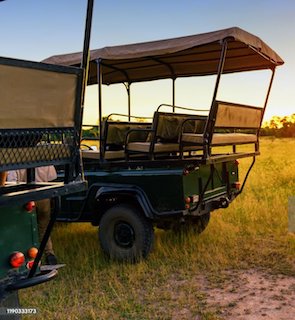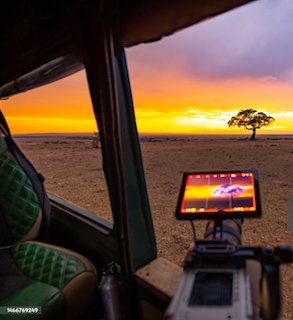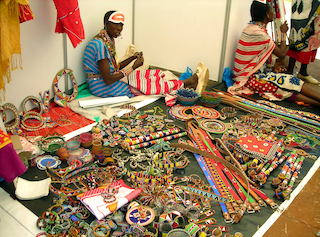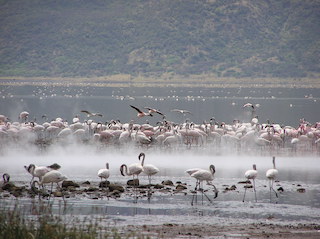-
When it comes to experiencing wildlife and landscapes of Maasai Mara, few options can compare to staying in a luxury lodge. Combining comfort, elegance, and proximity to nature, luxury lodges offer an unparalleled experience for those embarking on game drives to Mara. This article explores the features of luxurious accommodations.
-
The Maasai Mara National Reserve in Kenya is synonymous with one of nature’s most awe-inspiring spectacles: the Great Migration. Each year, millions of wildebeest, zebras, and other herbivores traverse the African plains in search of greener pastures. This is a testament to the resilience of wildlife and an unforgettable experience
-
Embarking on game drives to Mara is an unforgettable experience for wildlife enthusiasts and nature lovers alike. Located in Kenya, the Maasai Mara National Reserve is one of the premier safari destinations in the world. Known for its wildlife and landscapes, the Mara is home to the renowned big five.
-
Planning a game drive to Maasai Mara is an exciting adventure for wildlife enthusiasts and nature lovers alike. However, understanding the costs associated with this experience is essential for budgeting your trip. In this article, we will explore the factors that influence the cost of a game drive to Mara.
-
When planning an unforgettable safari experience in Kenya, the key decision you will face is choosing the right vehicle for your game drives. This choice can significantly impact your comfort, wildlife viewing opportunities, and experience in the wilderness. The most popular options for you are safari vans and land cruisers.
-
Game drives offer an exhilarating way to experience the natural beauty and diverse wildlife of destinations like Kenya, Tanzania, and South Africa. Among the many considerations when planning a game drive, timing is crucial. This article explores why morning game drives are often the best choice for all wildlife enthusiasts.
-
Kenya, renowned for its stunning landscapes, offers an unparalleled experience for wildlife enthusiasts and adventure seekers alike. The best way to explore Kenya is through a game drive. A game drive in Kenya provides an exciting opportunity to witness the Big Five and other incredible wildlife in their natural habitat.
-
The Masai tribe, one of Africa’s most recognized ethnic groups, is renowned for its vibrant culture, which is expressed through a series of unique ceremonies. These Masai ceremonies play a crucial role in the community’s social structure, identity, and the transmission of cultural values from one generation to the next.
-
Maasai tribe, known for their vibrant culture and rich traditions, is one of Africa’s most iconic pastoralist communities. Primarily found in Kenya and Tanzania, the Maasai have a unique way of life that is closely tied to their environment, particularly their livestock. Their eating habits reflect their values and beliefs.
-
The Masai tribe, known for their vibrant culture, distinctive dress, and deep connection to the land, is one of Africa’s most recognized ethnic groups. Primarily found in southern Kenya and northern Tanzania, the people who belong to the Masai tribe have maintained their traditional lifestyle despite the pressures of modernization.
-
The Maasai Mara national reserve is the most iconic wildlife destination in the world, drawing thousands of visitors each year with its breathtaking landscapes, rich biodiversity, and the thrilling experience of the Great Migration. When planning a trip to this remarkable destination, one of the considerations is where to stay.
-
Masai Mara, a sprawling expanse of savannah is the most celebrated safari destinations in the world. Situated in southwestern Kenya, this renowned reserve is part of the larger Mara-Serengeti ecosystem, which spans across both Kenya and Tanzania. With its landscapes, wildlife, and cultural heritage, the Mara captivates the world travellers.
-
Tourism in Kenya offers a vibrant tapestry of experiences, with the Maasais playing a significant role as both cultural icons and key stakeholders in the tourism industry. As visitors flock to Kenya to witness the majestic landscapes and unique cultural practices of the Maasai, the impact of tourism on this indigenous community is profound and multifaceted. This comprehensive guide explores the various dimensions of tourism’s influence on the Maasais, including its economic benefits, cultural implications, and the challenges faced by the community. Tourism is a double-edged sword, offering both opportunities and challenges, especially for indigenous communities such as the Maasais.
-
The Masais of Kenya are renowned for their vibrant culture and deep connection to the land. Central to their cultural identity are the rich and diverse mythologies that shape their worldview, traditions, and daily life. These mythologies not only provide insight into Masai beliefs and values but also reflect their profound relationship with nature and the divine. This comprehensive guide explores the varied mythologies of the Masais in Kenya, shedding light on their origins, key themes, and cultural significance. The Masais of Kenya and northern Tanzania possess a rich tapestry of mythological beliefs that have been passed down through generations.
-
The Maasai people, renowned for their rich cultural heritage and distinctive way of life, are facing a multitude of challenges in contemporary Kenya. Despite their vibrant traditions and historical significance, the Maasai are navigating a complex landscape of social, economic, and environmental issues. This in-depth guide explores the various challenges faced by the Maasai people in Kenya, shedding light on their impacts and the ongoing efforts to address these issues. The Maasai people in Kenya, with their striking traditions and deep connection to the East African landscape, are experiencing a range of challenges that threaten their nomadic way of life.
-
Masai people are one of the most iconic and recognizable ethnic groups in Kenya, known for their distinctive culture, traditions, and vibrant way of life. Situated in the heart of East Africa, the Masai have played a crucial role in shaping Kenya’s cultural landscape. This in-depth guide explores the Masai people, their history, cultural practices, and their impact on Kenya’s tourism and heritage. The Masai, or Maasai, are a Nilotic ethnic group known for their rich cultural heritage and semi-nomadic lifestyle. Predominantly found in Kenya and northern Tanzania, Masai are renowned for their traditional customs, colorful attire, and social structures.
-
Kenya is renowned for its breathtaking landscapes and rich wildlife, but among its many treasures, the Mara region stands out as a jewel of natural beauty and cultural significance. Whether you are planning a safari, interested in conservation efforts, or simply fascinated by this unique area, understanding the Mara in Kenya is essential. This comprehensive guide will delve into the essence of Mara, covering everything from its geography and wildlife to conservation efforts and cultural impact. Mara is synonymous with African safari experience. Located in southwestern Kenya, the Mara region encompasses the famous Maasai Mara National Reserve and adjacent conservancies.
-
Kenya wildlife safaris are renowned all over the world for offering unparalleled wildlife experiences and cultural encounters amidst stunning landscapes. However, planning a wildlife safari can raise many questions for potential travelers, from logistical concerns to understanding what to expect. This comprehensive guide addresses frequently asked questions about Kenya wildlife safaris, providing detailed insights to help you prepare for an unforgettable adventure. By addressing these common concerns, you can embark on your Kenya wildlife safari with confidence, knowing that you are well-prepared to enjoy the breathtaking wildlife encounters, cultural insights, and personal growth that this extraordinary journey has to offer.
-
Kenya wildlife safaris have captivated the imagination of travelers and nature enthusiasts worldwide, offering more than just an opportunity to view majestic animals in their natural habitats. The significance of Kenya wildlife safaris extends far beyond the thrill of spotting the Big Five or witnessing the Great Migration. These safaris are imbued with cultural, ecological, and emotional dimensions that underscore their profound impact on both visitors and the broader conservation efforts in Kenya. This article explores the mysterious significance of Kenya wildlife safaris, delving into their cultural heritage, ecological importance, and the deep connections they foster between people and nature.
-
What is the cost of Kenya safaris? Is is too expensive? Kenya safaris are renowned for their breathtaking landscapes, diverse wildlife, cultural heritage, tribal dances, and exceptional experiences. However, before embarking on this wild adventure, understanding the costs involved is crucial for budgeting and planning. The cost of a Kenya safari can vary widely depending on several factors, including the type of safari, accommodation, time of year, the number of nights, and the inclusivity of services. This comprehensive guide will break down the various aspects influencing the cost of Kenya safaris, helping you make an informed decision about your adventure.




















